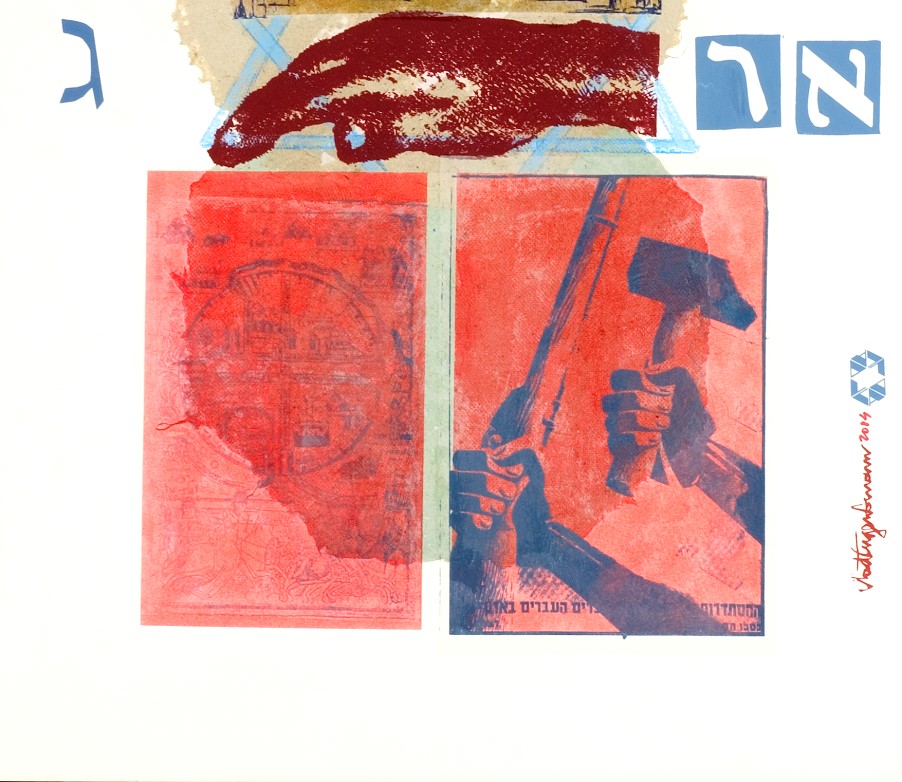El perro como figura de la alteridad
Samuel Glasserman y Carlos Grünberg
DOI:
https://doi.org/10.35699/1982-3053.2022.41966Palavras-chave:
Perro, Alteridad, Literatura judoargentinaResumo
En la siguiente contribución comentamos el uso de la figura del perro en dos obras de autores argentinos. Se trata de Zisie Goy, de Samuel Glasserman (1932) y Mester de Judería, de Carlos Grünberg (1940). El primero corresponde al género denominado criollismo ídish y el segundo a la poesía judeoargentina en español. En ambos casos nos centramos en situaciones de violencia donde aparecen los insultos “sangre de perro” y “perro judío”, respectivamente y que entendemos como actualizaciones de categorías ligadas con tradiciones de larga data.
Downloads
Referências
DOUGLAS, Mary. Pureza y peligro. Un análisis de los conceptos de contaminación y tabú. Madrid: Siglo XXI, 1940.
GLASERMAN, Samuel. Teatro: Obras dramáticas del ambiente israelita en la Argentina. Buenos Aires: Edición del autor, 1932.
GOLDBERG, Florinda. The Complex Roses of Jerusalem: The Theme of Israel in Argentinian Jewish Poetry. In: DI ANTONIO, Robert; GLICKMAN, Nora (comp.). Tradition and Innovation: Reflections on Latin American Jewish Writing. Albany: State University of New York Press, 1993. p. 73-87.
GOLDBERG, Florinda. ¿Tiempo de disolución? Sobre fronteras identitarias y escritura judía en América Latina. In: DOLLE, Verena (ed.). Múltiples identidades: Literatura judeo-latinoamericana de los siglos XX y XXI, Madrid: Iberoamericana-Vervuert, 2012.
GRÜNBERG, Carlos. Mester de judería. Buenos Aires: Argirópolis, 1940.
MILLER, Geoffrey. Attitudes toward Dogs in Ancient Israel: A Reassessment. Journal for the Study of the Old Testament, v. 32-34, 2008. p. 487-500.
GOTTLOBER, Abraham. The guilgul. In: NEUGROSCHEL, Joachim (comp.). Great Tales of Jewish Fantasy and the Occult: The Dybbuk and Thirty Other Classic Stories. Nueva York: Overlook Books, 1987. p. 386-434.
ROSKIES, David. Introduction to Romance of a Horse Thief, Joseph Opatoshu. In: WISSE, Ruth. A Shtetl and Other Yiddish Novellas. Detroit: Wayne State University Press, 1986. p. 144-145.
SCHWARTZ, Joshua. 2004. Dogs in Jewish Society in the Second Temple Period and in the Time of the Mishnah and the Talmud. Journal of Jewish Studies, v. LV. n. 2, otoño, p. 246-277, 2004.
SAX, Boria. What is a ´Jewish Dog´? Konrad Lorenz and the Cult of Wildness. Society & Animals, año 5, n. 3, 1997.
SAX, Boria. Animals in the Third Reich: Pets, scapegoats, and the Holocaust. New York: Continuum, 2000.
SINGER, Isaac Bashevis. El esclavo. Barcelona: Plaza y Janés, 1992.
SKURA, Susana. A por gauchos in chiripá... Expresiones criollistas en el teatro ídish argentino (1910-1930). Iberoamericana. Ensayos sobre letras, historia y sociedad. Ibero-Amerikanisches Institut, año 7, n. 27. p. 7-23, 2007.
SHTERNSHIS, Anna. Dogs. The Yivo Encyclopedia of Jews in Eastern Europe, v. 1. Nueva York: Yivo y Yale, p. 414-415, 2008.
SOSNOWSKI, Saúl. Prodigar la diferencia: lectura de Carlos M. Grünberg. Cuadernos de Literatura de la Universidad Javeriana, v. XX, n. 39 enero-junio, p. 388-396, 2016.
STOW, Kenneth. Jewish dogs: An Image and its Interpreters: Continuity in the Catholic-Jewish Encounter. Stanford: Stanford University Press, 2006.
TOKER, Eliahu. Un diferente y su diferencia. Vida y obra de Carlos M. Grünberg. Madrid: Taller de Mario Muchnik, 1999.
Downloads
Publicado
Edição
Seção
Licença
Copyright (c) 2022 Arquivo Maaravi: Revista Digital de Estudos Judaicos da UFMG

Este trabalho está licenciado sob uma licença Creative Commons Attribution 4.0 International License.
Os direitos autorais pertencem exclusivamente aos autores. Os direitos de licenciamento utilizados pelo periódico é a licença Creative Commons Attribution 4.0 (CC BY 4.0): são permitidos o compartilhamento (cópia e distribuição do material em qualquer meio ou formato) e adaptação (remix, transformação e criação de material a partir do conteúdo assim licenciado para quaisquer fins, inclusive comerciais.






